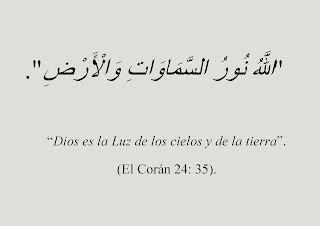 Las lenguas que tienen dos orígenes diferentes siempre tienen estructuras distintas como es el caso del árabe y el español. Esta diferencia estructural provoca varias dificultades en la traducción, sobre todo a nivel morfosintáctico y estilístico.
Las lenguas que tienen dos orígenes diferentes siempre tienen estructuras distintas como es el caso del árabe y el español. Esta diferencia estructural provoca varias dificultades en la traducción, sobre todo a nivel morfosintáctico y estilístico.
En nuestro caso, es decir la traducción del árabe al castellano, hay muchas formas lingüísticas en árabe que no pueden ser transmitidas de la misma manera al español, por lo tanto hay que buscar equivalentes en la estructura de la lengua meta. Tenemos como ejemplo muy claro la oración nominal en la lengua árabe que no existe en español. En castellano hay que tener un verbo, explícito o implícito, para que la estructura pueda ser clasificada como una oración. En este caso utilizamos generalmente la oración copulativa en la traducción aunque, en otros casos, optamos por otras alternativas. También tenemos el problema de los tiempos ya que en árabe solo tenemos tres tiempos, pero el verbo puede tomar unas formas especiales del presente como “الÙعل المجزوم” y “الÙعل المنصوب” y en este caso hay que utilizar otros modos y tiempos en la traducción al español como el modo subjuntivo.
Se plantea también el problema de la traducción de las figuras retórica porque, además de la diferencia cultural, son clasificadas de formas muy distintas en español que en árabe. Esta diferencia plantea unos problemas tanto en la traducción como en el análisis traductológico donde hay que determinar con precisión el equivalente de cada figura retórica y no de manera precipitada. Tenemos como ejemplo “الاستعارة” que no siempre es “metáfora”, además que la metáfora coincide con otras figuras literarias en árabe como “التشبيه البليغ”. La clasificación precisa de estas figuras retóricas, junto a sus equivalentes en la otra lengua, ayuda mucho en el marco traductológico.
Abstract
The different origins and roots of languages always mean a difference in the structure of these languages, as in the case of Spanish and Arabic. This difference in structure imposes many obstacles when translating between these two languages, especially at the level of respect for the rules of each language and the use of rhetorical methods.
In our research, translation from Arabic into Spanish, there are many linguistic structures that cannot be transferred as they are to Spanish, so we must look for analogues in the structure of the language to which we translate. As a clear example, we have a nominal sentence in Arabic that does not exist in Spanish. In Spanish, a linguistic structure can only be regarded as a "sentence" unless the verb is present, whether explicit or implicit. In this case, we use what is called "La oración copulativa" in Spanish, which means a phrase that is similar to the subject and the predicate with a verb that binds them, that is usually "ser" or "estar". In some cases, however, the translator must turn to other options.
We also have difficulties with the translation of verbs with different tenses between the two languages. In Arabic there are only three tenses, while in Spanish we find many forms taken by the verb "modos" in addition to the many tenses. However, the verb in Arabic can take exceptional forms as well, such as the subjunctive and the jussive tense. In this case, other forms of the verb can be used in Spanish, which means "modos" such as "el modo subjuntivo" in addition to other tenses.
We also find difficulties that the translator faces when translating the rhetoric and figures of speech. In addition to the difference in cultures, these figures of speech and rhetoric are categorized differently in Spanish than in Arabic. This difference imposes many obstacles both in translation and when analyzing the translation, while the analogue to every rhetorical device or figure of speech must be determined accurately and not hastily. For example, “الاستعارة” does not always mean "metáfora", in which the latter intersects with figures of speech in Arabic such as a simile. Accurate categorization of these figures of speech and rhetoric with their analogues in the other language helps a lot in the field of translation.


